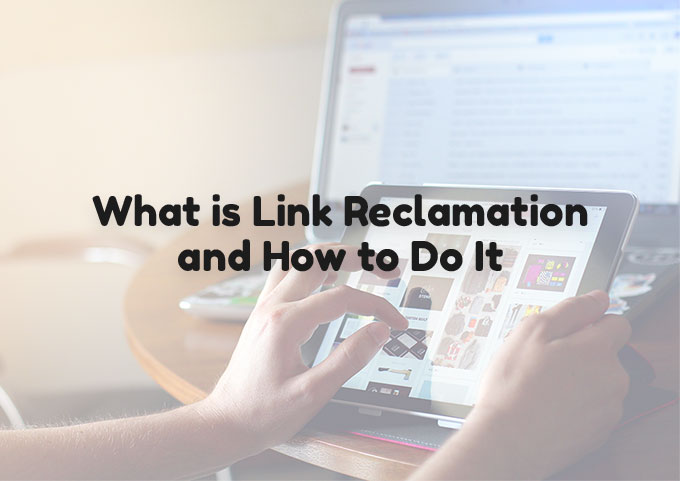
Did you know that many of the backlinks you build to your website die over time? Research by Ahrefs shows that in a 9-year timeframe, 66% of all links around the web have died for some reason, in a process called link rot. Another research shows that 8% of links that are built die in 3 months. To win back some of those links and your budget, you can do something called link reclamation.
Today, we’re going to show you what link reclamation is, why you need to do it and how you can get started, step-by-step.
What is link reclamation?
Link reclamation is the process of winning back the backlinks that were once built but got deleted. This is what the process looks like:
- You build a link and it’s live on a website
- The link is deleted or removed for some reason
- You reclaim it and get it back online
Since we explain that building a link on average can cost $300 and upwards, when links get removed, it’s akin to burning money. Besides a dent in your budget, it can also mean decreased SEO performance for your website or lost rankings. In other words, getting those links back would be the smart thing to do.
Links die for various reasons, and here is what Ahrefs has to say on the matter:
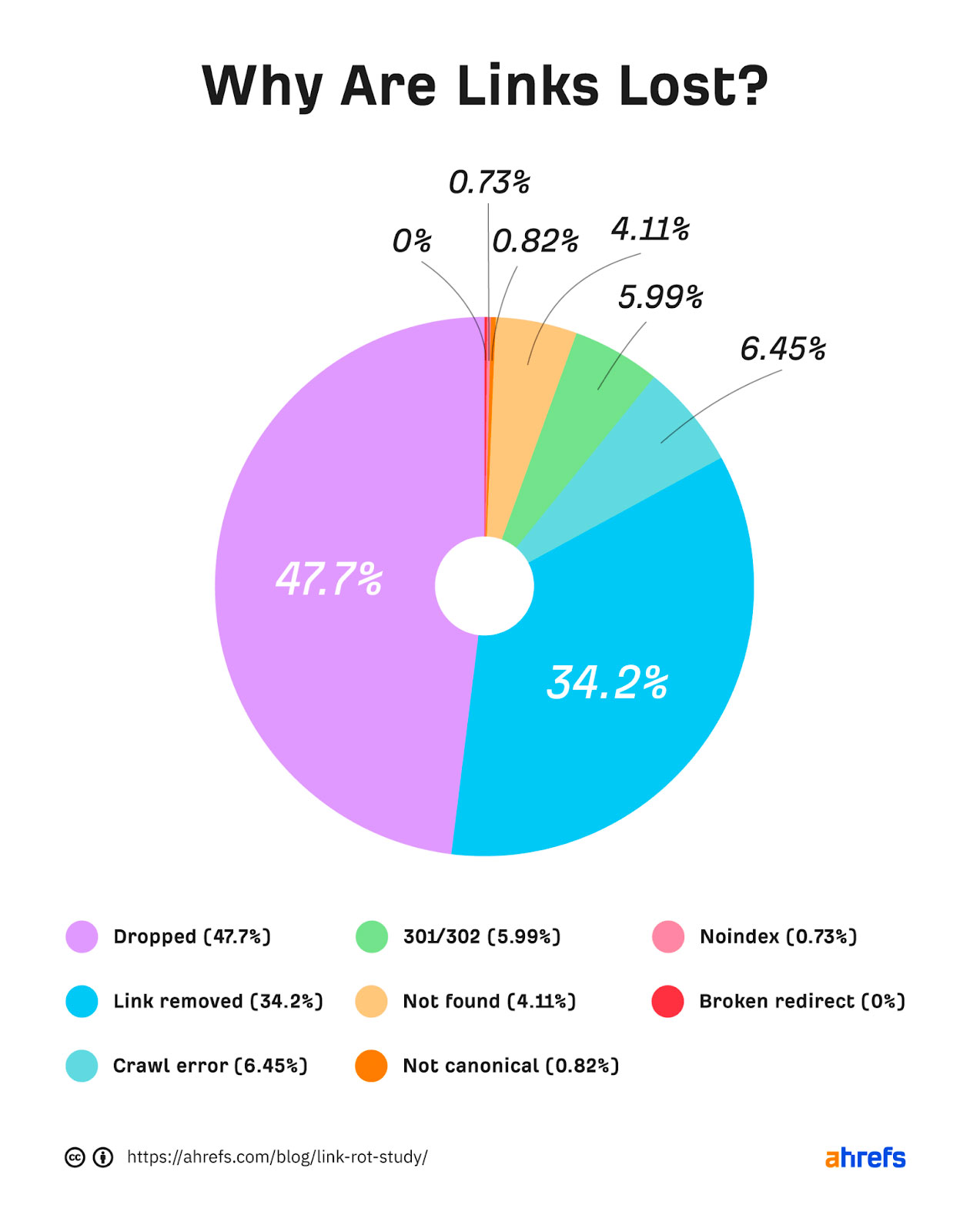
The most common reason for links dying is the link being dropped – the website cannot be indexed or crawled or it does not exist any more. The second major reason is that the link was removed from the website. And while you cannot make a deleted website go back to life, you can win back lost and removed links.
Link reclamation vs unclaimed brand mentions
The two terms are commonly lumped together but they are actually quite different.
With link reclamation, you have broken links that you had acquired before and you need to win them back by reclaiming them.
Unclaimed brand mentions happen when someone mentions the name of your brand (e.g. Coca Cola) and does not link to your website. You never had this link so you cannot reclaim it.
The two link building processes have different steps and ways to do them effectively. Today, we’re going to focus on lost links and we’ll talk about unlinked brand mentions some other time.
Why do backlinks get removed?
If you take a look at the infographic above, you’ll see a third of all links are removed through manual action. Some of the possible reasons for this include:
- A webmaster or a website editor removed the link for various reasons
- The page where the link was placed no longer exists (and throws a 404 error)
- The page where the link is redirected
- The website manager or owner set the page to noindex so the link is no longer visible by a search engine such as Google
Whether it’s redirects, manual removals or something else, you’ll want to find out if your backlinks were removed and why.
How to find broken backlinks
The link reclamation process starts by learning which links were removed from your backlink profile. The easiest way to do this is by using an SEO tool, and our pick is Ahrefs’ incredibly powerful digital marketing app. Besides showing you new links in your link profile, Ahrefs can show you broken backlinks.
Load up your website and then head to the left side of your dashboard to click on “broken backlinks”.
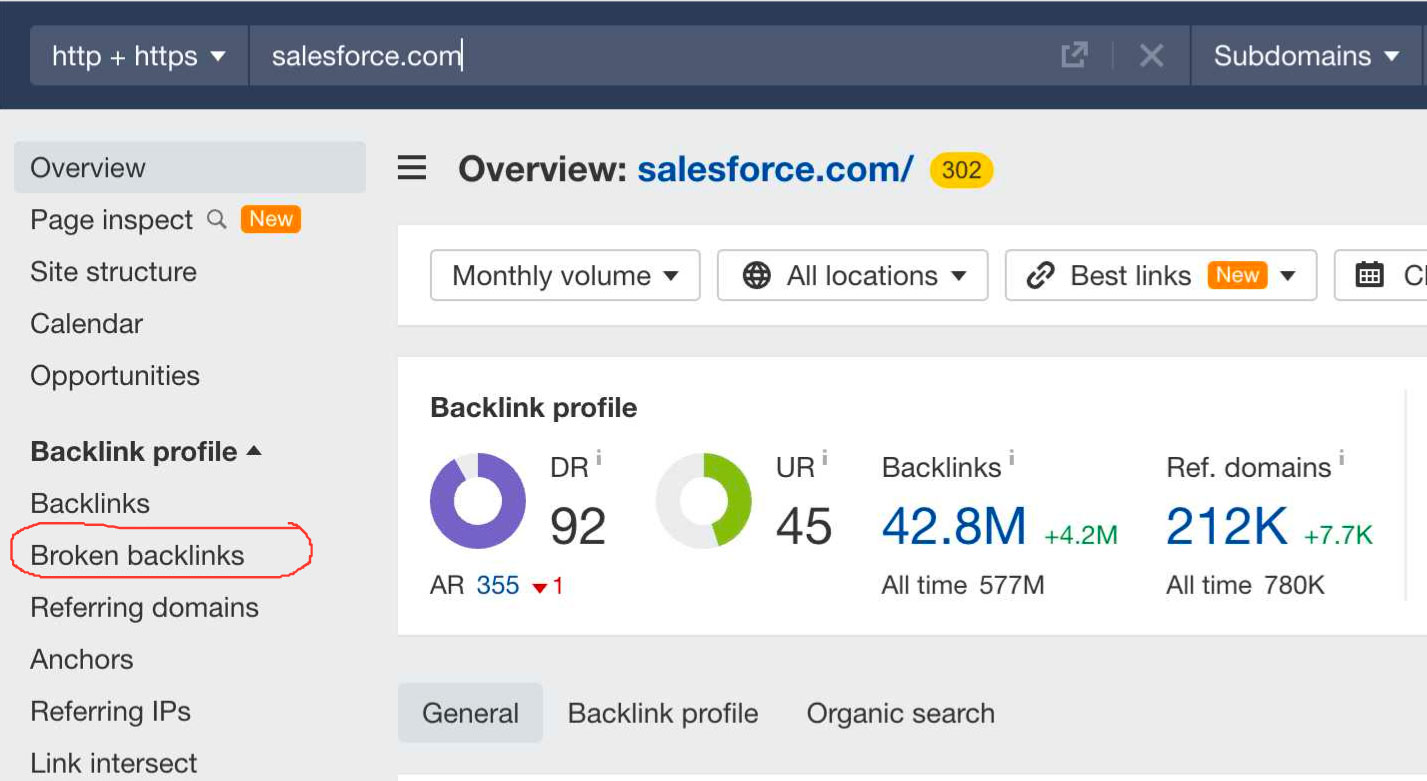
For Salesforce.com, there are quite a few lost backlinks over the years:
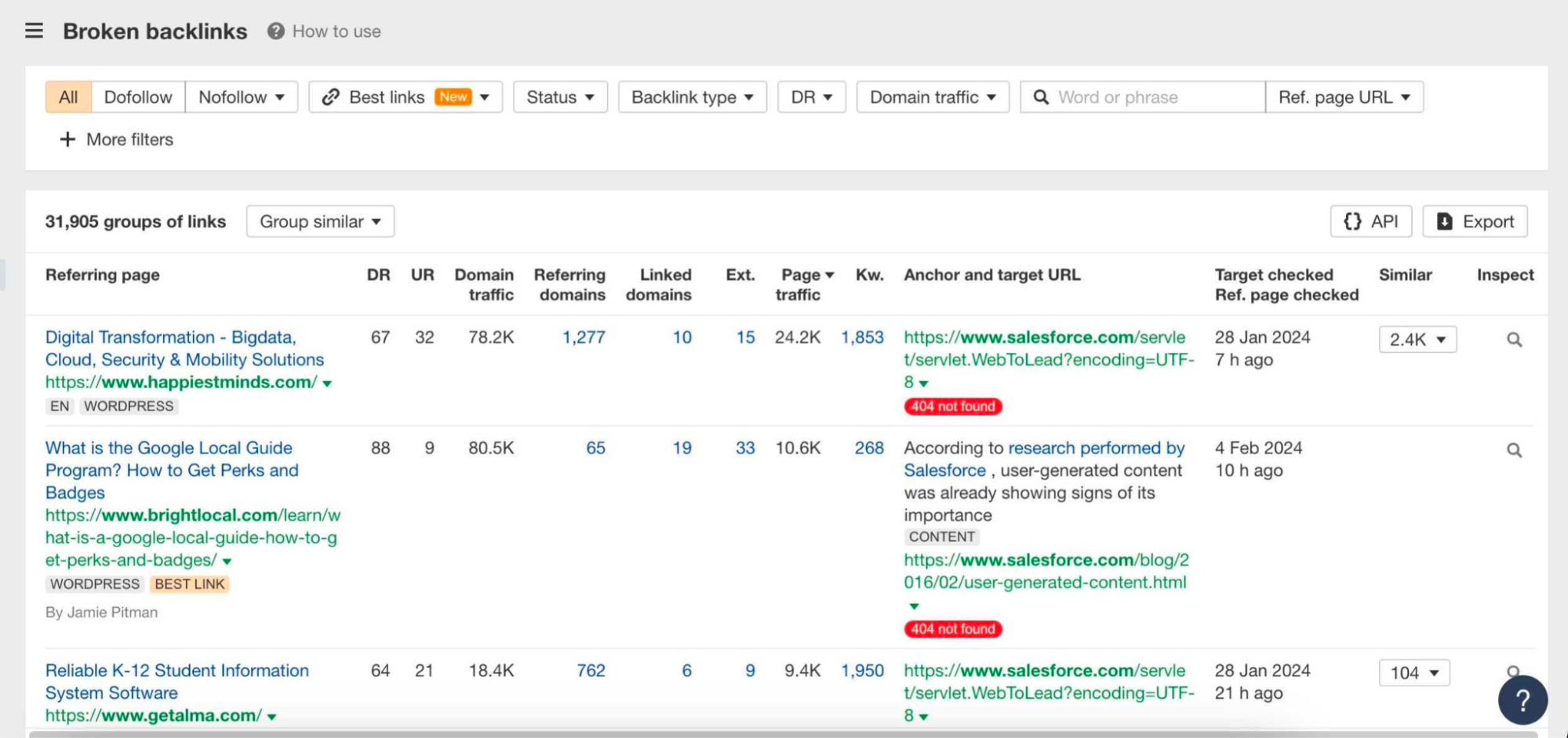
At this screen, you can do some filtering to find the backlinks that are worth reclaiming. Some examples of filters for your link building strategy include:
- Date (e.g. last 3 months)
- Type (dofollow vs. nofollow – we suggest going with dofollow)
- Domain rating (DR)
- The language of the website
- The type of link
Use this filter to find the top quality links you’ve lost. This part of Ahrefs Site Explorer lets you filter those backlinks according to all of these metrics so you can, for example, win back relevant high DR links instead of chasing low-value and low-DR, nofollow links.
According to Site Explorer, there are six possible reasons why a link was lost:
- Link removed
- 404 not found
- 301/302 redirect
- Noindex
- Broken redirect
- Not canonical
Here is how to solve each of those cases.
How to reclaim lost links
You can create an entire link building campaign to win back lost backlinks and reclaim some of that link juice. Depending on the reason why the link was removed, you’ll want to take a different approach.
Removed links
The site owner removed your link for whatever reason and you most likely won’t know why until you ask. Some popular reasons include:
- They replaced your link with something better and higher quality
- They have a new links policy and they revised all external links as a part of a new SEO strategy
- They updated and refreshed their page (for better quality, user experience, etc.) and your link was collateral damage
- They just don’t want to link to you anymore
Your first course of action is to do outreach and find out the exact reason why your link was removed. If you built the link yourself, just reach out to the person you contacted before and who added your link. If someone else built the link for you – ask them to reclaim it for you.
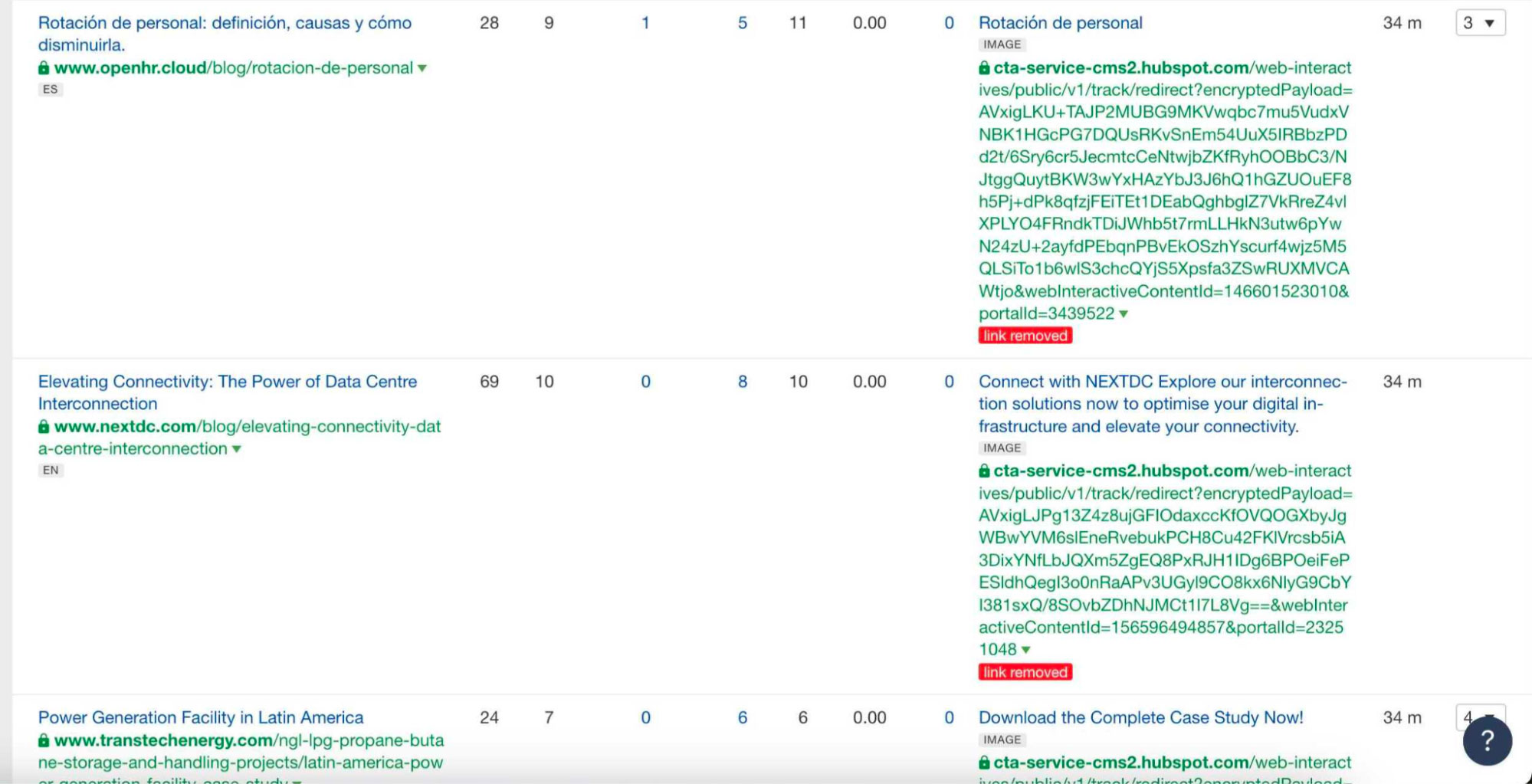
In most cases, website owners will be willing to add your link back if you show them there is something in it for them and that it benefits their SEO efforts and website authority.
404 not found
If the linking page throws a 404 code in Ahrefs, it means that it was removed and it’s not currently being redirected to anything. You lose link equity when a page is removed, but the person whose website it is also has negative consequences. When someone clicks on a link that leads to that page, they will get an error, instead of a redirect to another blog or a homepage.

If a website page throws a 404 error, it is worth getting in touch with the website owner to tell them about it. If it was done by accident, they’ll appreciate the heads up. If done intentionally, show them the importance of doing redirects, but without sounding too condescending.
The main tip is to show them the value they get for their website, rather than just trying to regain link value by getting a lost link back.
301/302 redirect
In this case, the person who gave you the link actually set up a redirect to another web page. This means that they gave you a link from a page and redirected that page to a different URL.
For example:
www.example.com/blog/top-crm-apps-2023
Was redirected to:
www.example.com/blog/top-crm-apps
In this case, your link remains on the page, it’s just that they decided to update the URL for some reason. Your anchor text and link remain the same, it’s just that the link comes to your page from a different source. You have nothing to worry about in this case.

But if the redirect happened like this:
www.example.com/blog/top-crm-apps-2023
Was redirected to:
This means that the original page was removed and the website owner decided to redirect the broken/deleted page to a completely different one. In this case, you should reach out and ask about what happened and how you can get your links back.
Noindex
If a page you got a link from is labeled as “noindex”, it means that the link is still there, it’s just that search engines such as Google can’t “see” it. These are not considered quality backlinks because the pages they come from are not visible in SERP.
The best course of action in this case is to reach out to the website owner and see the reason why the page was marked as noindex. There is a good chance that they did this by accident or unknowingly, and they’ll be glad you pointed it out. If not, explain the consequences of having noindex pages on their website.
Broken redirect
This one gets a bit more complex – there is a string of internal links that is being redirected. For example, there are three chains in the redirect and the second link in the chain is a page that gives a 404 error. As a result, the entire redirect chain does not work.
It is worth reaching out to the source and explaining that there is little SEO value in having complex broken redirects. Show them that the error is not only hurting you as the website they linked to, but also their own SEO efforts.
Not canonical
This is a common error that is typically nothing to worry about. Canonicalization tells search engines such as Google that there are multiple versions of a page and shows it which version is the right one.

A “not canonical” error usually means that there is a different version of the page, such as HTTPS (instead of HTTP) or one without a slash as opposed to a URL that includes a slash. Check if the link still exists on the target website and if everything is okay, you’re all set.
Reclaim your lost links easily
Reclaiming links can be as difficult as getting new backlinks. And especially if you did not build those links in the first place, the reclamation process can seem very tedious. And you have to maintain your existing links and run new SEO and content marketing initiatives on top.
If you’re ready to build links for your website, we can help.
Reach out today to see how we can help!



